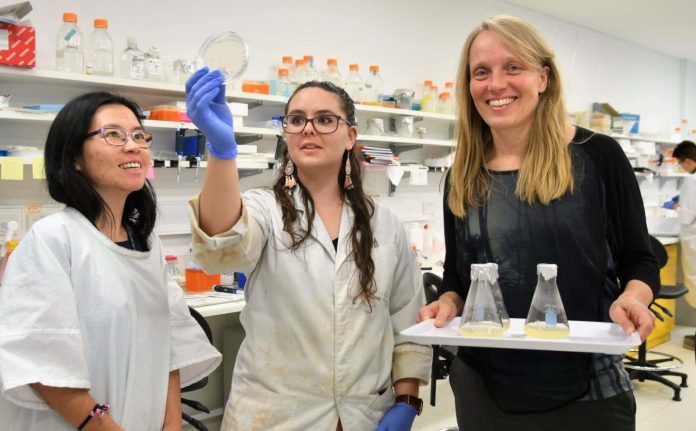A long-hidden metabolic system in cells could lead to new strategies for therapeutic cancer treatments in future.
Unlocking this process – from more than 350 million years ago – provides a new opportunity to find ways to suppress cell proliferation in the nutrient-poor tumour micro-environment, says Flinders University Professor Janni Petersen, who is head of the Environmental Control of Cell Growth and Cell Division laboratory at the Flinders Centre for Innovation in Cancer.
Her lab worked with researchers at St Vincent’s Institute (SVI) in Melbourne and other medical research centres to see whether a metabolic system critical for the regulation of cell growth and proliferation in a yeast called Schizosaccharomyces pombe, or S.pombe, also occurs in the mammalian cell system.
“What is fascinating about this yeast is that it became evolutionarily distinct about 350 million years ago, so you could argue the discovery, that we has now confirmed occurs in mammals, is at least as ancient as that,” says Associate Professor Jon Oakhill, Head of the SVI’s Metabolic Signalling Laboratory.
This project looked at two major signalling networks. Often referred to as the body’s fuel gauge; a protein called AMP-Kinase, or AMPK, regulates cellular energy, slowing cell growth down when they don’t have enough nutrients or energy to divide.
The other, that of a protein complex called mTORC1/TORC1, which also regulates cell growth, increases cell proliferation when it senses high levels of nutrients such as amino acids, insulin or growth factors.
A hallmark of cancer cells is their ability to over-ride these sensing systems and maintain uncontrolled proliferation.
“We have known for about 15 years that AMPK can ‘put the brakes on’ mTORC1, preventing cell proliferation,” says Associate Professor Oakhill.
“However, it was at this point that we discovered a mechanism whereby mTORC1 can reciprocally also inhibit AMPK and keep it in a suppressed state.
Professor Petersen says the latest experiments, to be published by Nature Metabolism today, showed that “yeast cells became highly sensitive to nutrient shortages when we disrupted the ability of mTORC1 to inhibit AMPK.
“The cells also divided at a smaller size, indicating disruption of normal cell growth regulation,” says Professor Petersen, who also is part of the Nutrition and Metabolism theme at SAHMRI.
“We measured the growth rates of cancerous mammalian cells by starving them of amino acids and energy (by depriving them of glucose) to mimic conditions found in a tumour.
“Surprisingly, we found that these combined stresses actually increased growth rates, which we determined was due to the cells entering a rogue ‘survival’ mode.
“When in this mode, they feed upon themselves so that even in the absence of appropriate nutrients the cells continue to grow.
“Importantly, this transition to survival mode was lost when we again removed the ability of mTORC1 to inhibit AMPK.”
These findings provide a new opportunity for cancer treatment strategies aimed at suppressing cell proliferation in the nutrient-poor tumour microenvironment, the researchers conclude.
“By uncovering the ancient, fundamental and conserved bi-directional regulation between two major metabolic signalling networks (mTORC1 and AMPK), we reveal a unique opportunity for therapeutic strategies,” Professor Petersen adds.
“Blocking mTORC1-mediated negative feedback to AMPK is likely to protect against cancer, as poorly vascularised solid tumors cells are be expected to be nutritionally stressed,” she says.
“A better understanding of AMPK/mTORC1 co-regulation is likely to have a large impact in the field as it will allow for optimised treatments of several diseases including cancer and metabolic diseases associated with altered AMPK activity.
“mTORC1/AMPK dysregulation is well established as a driver of cell proliferation and survival in nutrient-starved tumour microenvironments, and are also implicated in a range of prevalent diseases such as type 2 diabetes, insulin resistance and inflammation,” she says.















